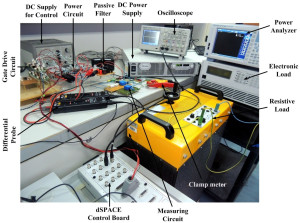Title: High efficient single-phase grid-tied transformer less PV inverter with low leakage current

Abstract: Recently, there has been an increasing interest on transformerless photovoltaic (PV) inverter due to the benefits of lower cost, smaller size and weight, and higher efficiency compared to the ones with transformer. It is also going to be more widely adopted as the penetration level of PV system into utility grid is continually increasing. However, one of the technical challenges of transformerless PV inverter is the leakage current issue which mostly depends on the inverter topology structure and control scheme have to be addressed carefully. Another important issue of transformerless inverter is the efficiency that can be improved by optimal design of the inverter. In this study, these two main issues are investigated. The dissertation begins with a comprehensive review of transformerless PV inverter topologies with focus on leakage current and efficiency. In order to select a suitable topology, an analysis by highlighting some key features and a comparison table has been presented. An improved topology is then proposed to better eliminate the leakage current which is introduced by the fluctuating common mode (CM) voltage. The effect of switches junction capacitance on CM voltage is investigated and the desired relationship among them to ensure constant CM voltage is proposed. By introducing two additional capacitors, the constant CM voltage is achieved with this topology. However, the losses due to additional capacitors have very low impact on the overall efficiency. Another new topology is proposed by adding two switches and two diodes with the full-bridge (FB) inverter. The proposed circuit structure does not lead itself to the reverse-recovery issues which allow utilizing MOSFET switches, thereby increasing the overall efficiency. Also, the size of the passive filter has been reduced by increasing the switching frequency without compromising the overall efficiency. The CM voltage remains constant during the operation period, thus the leakage current is minimized to acceptable level. Finally, the simulation and experimental results are shown to verify the theoretical explanation. It has shown that the improved topology combines the superior performance of common-mode and different-mode characteristics. The maximum efficiency of the proposed new topology is 98.6% which is slightly higher than the European efficiency of 98.46%, indicating an optimal topology.
Last Update: 21/11/2022